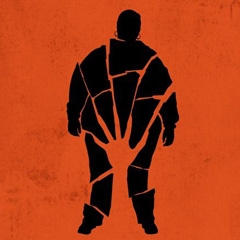Monday night, I was going from the East Village to Gramercy, and even though it was raining and cold, I decided to walk. I crossed 18th Street between 2nd and 3rd Avenues. I hadn't necessarily been avoiding this block, at least not purposely, but even with as much time as I've spent in that neighborhood, I hadn't walked down that block in years. On the south side of the street, towards the center of the block is a string of nearly identical townhouses; brownstone staircases leading up to an old-New York style grandeur of years gone by - big windows revealing high ceilings with ornate moldings and chandeliers. Each of these houses has small entrances underneath and to the side of their front stairs. One of these entrances led to the apartment that my boyfriend Tom used to live in back in the eighties. I couldn't be sure which was the one he lived in, but as I walked back and forth a couple of times trying to isolate which house it was, I remembered times I'd spent inside one of those buildings years ago; young, excited, in love, hopeful, not yet cynical, not spoiled; a naïve and innocent me, a deceptively simpler time.
Tom and I were young and we were foolish, carefree and uninhibited. The two of us, bundles of raw hormones set loose on each other (and the world) in an increasingly scary and uncertain time. Tom became HIV positive. Impending fear hung over our young lives as friends and acquaintances would get sick and then quickly vanish. I have no recollection of our even talking about our fear. I do remember Tom being tenacious and uncompromising in taking precautions to keep me safe. This often resulted in his withholding of sex - a gesture I can now see as loving, but as a young man raging with desire, was unable to accept. Even so, we managed to stay together through a number of tumultuous years, the fondness and physical attraction of each for the other outweighing the difficulties of our fear and our sero-discordance.
At the time, friends, justifiably enraged by the lack of HIV/AIDS services or treatment, Mayor Koch's lax response, and the Reagan administration's negligence harnessed their anger and joined ACT UP. I volunteered at GMHC (at the time, still a two room office above a restaurant on 18th Street and 8th Avenue) and the PWA Coalition, a small organization located in a donated apartment off of a courtyard on West 12th Street that helped people with AIDS acquire experimental drugs and acted as a support center for a community that was quickly being slaughtered by an invisible monster.
I admired those brave warriors who threw themselves wholeheartedly into battle, educating themselves and their community through civil disobedience and community organizing; changing the trajectory of HIV/AIDS treatment and legislation for generations to come. I cheered them on; stayed on the periphery. I didn't possess the tools to focus or hold my resolve in the face of such loss or the fear of my own mortality. I turned my concentration to pursuing what then looked like a promising career in the arts, meeting people with similar interests and turning my attention away from the overwhelming health crisis and away from Tom. Tom, whose health was declining as he quietly slipped into depression and secret drug abuse. Of course, now, with hindsight and some adult critical thinking skills, these turn of events all make perfect sense, but at the time, I didn't know what was going on; I simply couldn't process what was happening in my world.
For a few years, I excelled in my nascent career. I traveled, was lauded for my talents, met new and exciting people, and began to quietly immerse myself in drink and drugs - perhaps to quiet the guilt I'd felt for abandoning this love, for abandoning Tom, or maybe even the guilt of being an unlikely survivor when all that remained of handfuls of friends were memories of beautiful young men, no longer there to share my journey with; opportunity ripped from them. I was actively constructing protective walls all around me. Drugs, alcohol, and denial make for sturdy building blocks when creating an impenetrable barrier against the world.
I learned that Tom had died after the fact. I hadn't seen or spoken with him in some time. Estranged from his family and with few friends, the young man who may have been the great love of my life had died a lonely and unnoticed death while I was off chasing childish ambitions. An adult, but really little more than a boy, with no emotional coping tools, it was too much for me to even consider. My alcoholism and drug addiction blossomed, my life would become a demoralizing whirlwind of unmanageability and shame that lasted the next ten years. I'd opted for ignorance of my own HIV status, understanding that a positive test result would likely mean death. In 1996, at a doctor's insistence, I took an HIV test and the results came back positive; just in time for the first generation of the life-saving "cocktail."
I walked 18th Street last Monday, and it was rainy, and it was cold. Certainly self-indulgent, perhaps even maudlin, I imagined all that might have been if circumstances had been different, if I'd been able to respond differently. Even if Tom couldn't have survived his illness (he died in 1990 or 91, five or six years before protease inhibitors were available), maybe facing my fears and my feelings, maybe being able to communicate openly with him could have saved him those final years of drug use and isolation, could have given us both a genuine, if all-too-brief partnership. Only now, more than a decade into my own recovery, am I beginning to unpack my feelings of such devastating loss - and of my love for Tom.
Tom






















